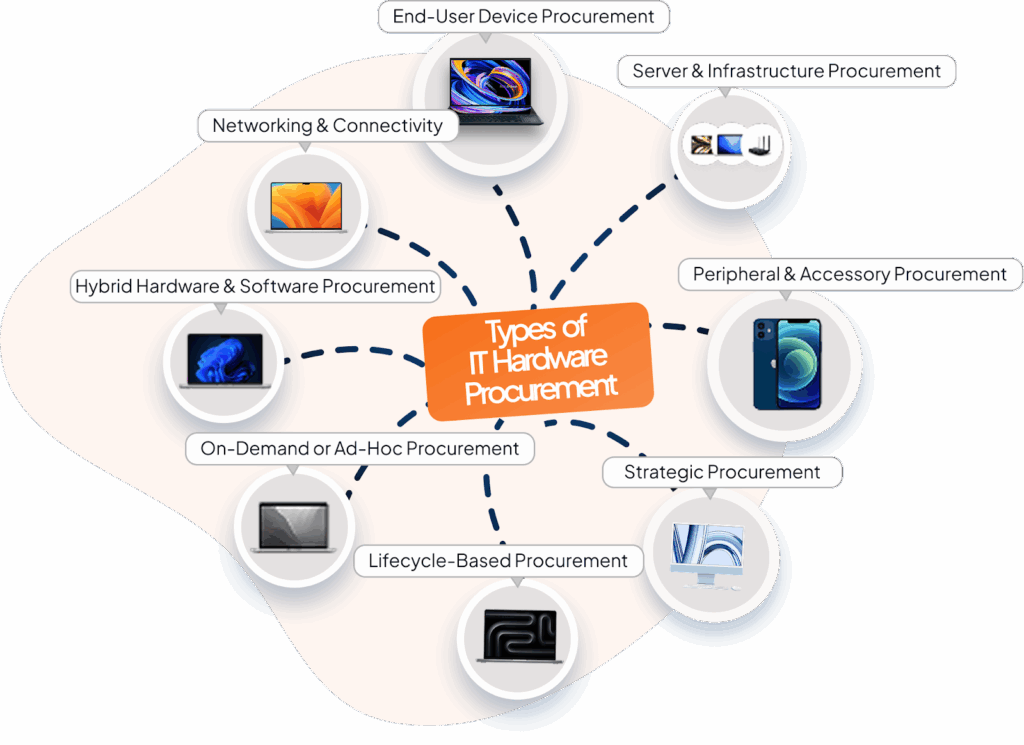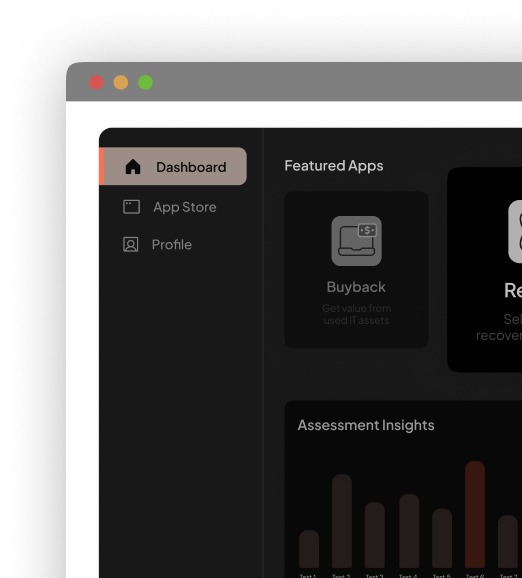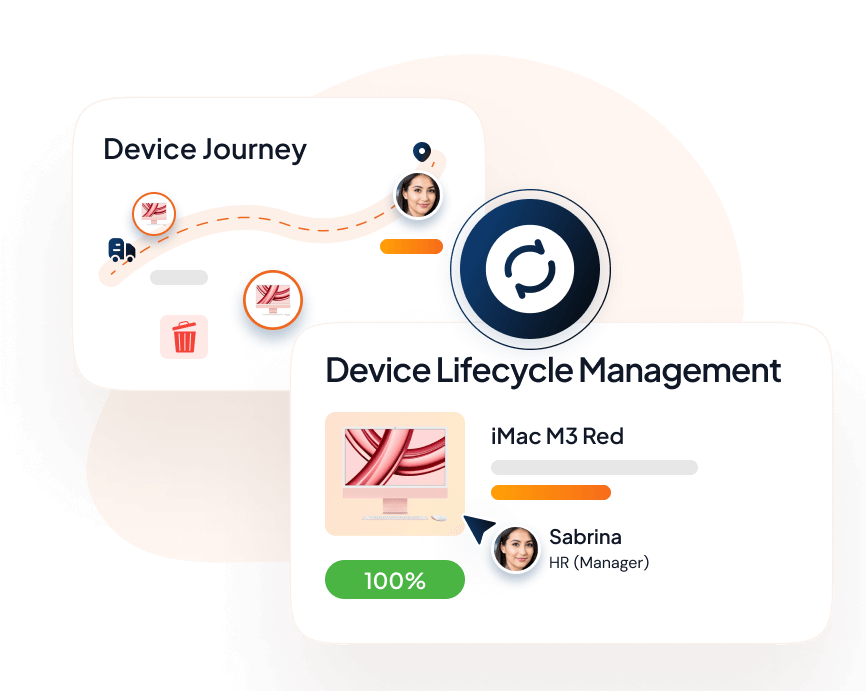A recent study revealed that over 30% of enterprise IT budgets are still spent on hardware, even in an era dominated by cloud computing and digital transformation.
That’s a big signal: while software and cloud services are evolving fast, companies still rely on the tangible backbone of technology from laptops, servers, networking gear, to IoT devices to keep business running.
Key Takeaways:
- IT hardware procurement connects purchasing, deployment, tracking, and end-of-life management to boost efficiency and control costs.
- Different types of procurement, from end-user devices to strategic lifecycle-based buying, help meet varied IT needs.
- Optimising procurement improves productivity, ensures compliance, simplifies vendor management, and supports sustainability.
- Challenges like fragmented vendors, lack of visibility, delays, security risks, and changing requirements require structured processes and automation.
And that dependency makes IT hardware procurement more critical than ever.
Think about it, when employees don’t get devices on time, when teams juggle multiple vendor contracts, or when there’s no clear visibility into inventory, productivity stalls, costs spiral, and risks multiply.
According to the latest forecast by Gartner
Worldwide IT spending is expected to total $6.08 trillion in 2026, an increase of 9.8% from 2025.
What is IT Hardware Procurement?
At its simplest, IT hardware procurement is the process of sourcing, acquiring, and managing the physical IT equipment an organisation uses, such as laptops, desktops, servers, switches, mobile devices, and infrastructure appliances.
But it’s more than just buying. Proper hardware procurement ties into the whole IT equipment lifecycle management:
- Identifying needs (which device types, specs, quantities)
- Purchasing or contracting with vendors
- Deploying devices to users or locations
- Tracking who has what, what status it’s in
- Refreshing/upgrading when needed
- Recovering old hardware, redeploying or disposing responsibly
In other words, procurement is the first step in a chain that connects to asset management, deployment, maintenance and end-of-life recovery. When you treat procurement as isolated, you miss major opportunities for cost, efficiency and sustainability.
Unlock seamless IT asset management with Unduit.
Discover how our platform automates the entire IT asset lifecycle, from procurement to disposal.
Book a Demo!Types of IT Hardware Procurement
Not all hardware procurement is the same. Depending on your company’s IT setup and goals, you’ll deal with different categories of hardware, each with its own priorities, timelines, and risks. Here’s a breakdown of the main types every IT team should know:

1. End-User Device Procurement
This covers all the tech your employees use daily, including laptops, desktops, monitors, and accessories. A well-managed device procurement process ensures your team gets reliable hardware fast, without overspending or downtime.
2. Server & Infrastructure Procurement
From on-prem servers to data centre racks and networking gear, infrastructure procurement forms the backbone of your IT environment. These purchases are high-value and mission-critical, requiring careful planning, vendor comparison, and lifecycle tracking.
3. Networking & Connectivity Procurement
Routers, switches, access points, and cabling are everything that keeps your organisation connected. Networking hardware procurement focuses on speed, reliability, and scalability as your business grows.
4. Peripheral & Accessory Procurement
Often overlooked but essential keyboards, docking stations, headsets, webcams, and other peripherals that enhance user productivity and experience.
5. Hybrid Hardware & Software Procurement
Many modern devices come bundled with software licenses or security tools. Managing both together helps ensure compatibility, streamline licensing, and simplify support.
6. Lifecycle-Based Procurement
Instead of buying reactively, this approach aligns purchases with hardware lifecycle stages, from deployment and maintenance to refresh or disposal. It’s the foundation of proactive IT Asset Lifecycle Management (ITALM) and helps control costs long-term.
7. On-Demand or Ad-Hoc Procurement
Quick one-off purchases are made when a need suddenly arises, like replacing a broken laptop or scaling up for a new project. It’s fast but risky if used too often without process oversight.
8. Strategic Procurement
A structured, policy-driven approach that centralises vendor management, standardises hardware models, and optimises total cost of ownership (TCO). This is what mature IT organisations aim for.
Key Benefits of IT Hardware Procurement

When you optimise your hardware procurement process and tie it into lifecycle thinking, you unlock multiple benefits:
Cost Efficiency & Predictable Spending
By standardising procurement, consolidating vendors, negotiating volume discounts, and choosing models like leasing, you gain better cost control. You also reduce downtime and refresh costs. For example, structured procurement saves money and simplifies operations.
Enhanced Productivity
Faster device provisioning and deployment mean employees get up and running sooner. Automated workflows reduce bottlenecks.
Better Compliance & Audit Trails
Automated procurement records, standardised vendor workflows, and asset tracking help you stay audit-ready and meet regulatory requirements.
Sustainability & Circular IT
Reusing assets, reducing e-waste, and recycling responsibly. Many companies now include sustainability in their procurement KPIs.
Vendor Consolidation & Simplified Management
Managing fewer end-to-end platforms/vendors, using a unified dashboard, means you reduce admin overhead and complexity.
By aligning procurement with asset lifecycle management, you get a more strategic return from your hardware investment, not just the initial purchase.
Common Challenges in IT Hardware Procurement
Even with good intent, many organisations bump into roadblocks when managing hardware procurement. Here are typical pain-points:
Fragmented Vendor Ecosystem
Multiple vendors, each with their own pricing, contract terms, and delivery timelines. It’s hard to standardise and negotiate when you’re dealing with dozens of suppliers.
Lack of Visibility
Without asset lifecycle tracking, you don’t know what hardware is in use, where it is, what condition it’s in, or what it costs across its life. This means you can’t forecast spend or optimise refresh cycles. The concept of device lifecycle management emphasises this visibility gap.
Procurement Delays
Manual approvals, slow purchase orders, shipping bottlenecks, complex global logistics. These slow deployments frustrate users.
Security & Compliance Risks
Devices often contain data. Improper sourcing, lack of secure data wiping at end-of-life, and unclear chain-of-custody create data breach risk. Unduit emphasises full certified data erasure and global compliance.
According to GoodFirm’s global IT spending survey,
44.1% of the respondents feel security concerns are one of the reasons for an organisation’s IT spending.
Sustainability Gaps
Old hardware often sits unused, or is simply disposed of, rather than being recovered or reused. This increases cost and environmental footprint.
Changing Requirements
With remote/hybrid work, device types, delivery geographies and refresh rates are shifting faster than many procurement processes can cope with.
Recognising these challenges is the first step to designing a strong procurement strategy that bypasses them.
Best Practices for IT Hardware Procurement
To overcome the challenges and unlock the benefits, here are proven best practices you should embed into your procurement & device-lifecycle strategy:
Centralise Procurement Processes
Use cloud-based procurement/ordering systems so that all asset purchases, renewals and deployments are managed from one place, with consistent workflows, approvals and tracking.
Adopt Lifecycle Thinking Early
At the procurement stage, plan for deployment, refresh/replacement, recovery or resale/disposal. Connect hardware procurement with asset management and end-of-life strategy.
Vendor Performance Evaluation
Track SLAs, delivery times, device quality, and support responsiveness. Negotiate standard terms across global regions to reduce variability.
Prioritise Compliance & Security
Ensure procurement contracts include secure data erasure, chain-of-custody, and environmental compliance. Especially important for devices with sensitive data or in regulated industries.
Leverage Data Analytics
Use data from your asset inventory (who has what, which devices are unused or underused, which are ageing) to forecast hardware needs, optimise refresh cycles, and reduce excess inventory.
Automate Workflows Where Possible
Manual purchase orders, spreadsheets, and paper approvals are slow and error-prone. Automate approvals, device ordering, tracking, and recovery workflows
By embedding these best practices, your hardware procurement becomes a strategic enabler rather than a cost centre.
How Unduit Simplifies IT Hardware Procurement

To bring this to life, let’s look at how Unduit simplifies and automates IT hardware procurement and asset lifecycle management:
- Centralised Procurement Dashboard – The Unduit platform provides one hub where you can manage procurement worldwide: order devices, track status, manage vendors, and enforce policies.
- Integration with Recovery, Replacement & Environmental Reporting – The platform covers the full lifecycle: procures devices → deploys → tracks → recovers or refreshes → disposes or resells. It supports secure data erasure, compliance, and environmental reports
- End-to-End Lifecycle Automation – Unduit connects procurement, warehousing, logistics, deployment, and recovery through automation. From “e-ordering/procurement” to “device hub” to “buyback”, all under one roof.
- Outcome: Reduced TCO, Improved Visibility, Sustainability – Enterprises using such a platform benefit from lower total cost of ownership (TCO) for their device fleet, full visibility into what assets they have and where, and a more sustainable approach to device lifecycle. Unduit highlights: “Reduce TCO” and “Lower IT workload” on their homepage. Unduit
In short: using the right procurement + asset-lifecycle platform turns hardware procurement from a fragmented headache into a streamlined, strategic process.
FAQs
Q1: What are the steps of IT Hardware Procurement?
A: IT hardware procurement involves assessing needs, selecting vendors, negotiating contracts, issuing purchase orders, receiving and integrating hardware, and managing assets throughout their lifecycle.
Q2: How can we avoid vendor inconsistency when procuring hardware across regions?
A: Standardise hardware profiles, negotiate global SLAs, and maintain a vetted supplier scorecard.
Q3: What are common procurement pitfalls to avoid?
A: Avoid choosing only on the cheapest option, ignoring compatibility, and locking into rigid contracts.
Q4: Can smaller or ad-hoc orders be optimised for cost and consistency?
A: Yes, batch orders, standardise models, or negotiate with resellers to consolidate even small-volume purchases.
Q5: Should we lease hardware or buy outright?
A: Leasing or Device-as-a-Service (DaaS) can reduce upfront cost, align with refresh cycles, and improve flexibility.






